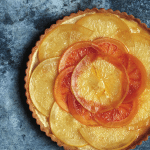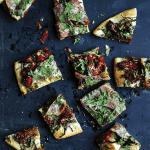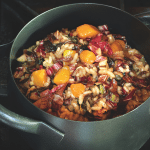It was a grapefruit that set Jennifer McLagan on the path to her new cookbook, Bitter: A Taste of the World’s Most Dangerous Flavor, with Recipes (HarperCollins Canada).
“When was the last time you saw a grilled grapefruit on a menu?” asks the Australian-born Toronto chef and writer. “I know it sounds so 1960s or ’70s, and it is, but a white grapefruit and a shot of dry sherry – it’s really, really good.” And yet, a bitter grapefruit is a fossil, practically extinct, while sweeter pink and ruby grapefruits have replaced them in grocery stores and restaurants. “I defy you to buy a white grapefruit today,” McLagan says.
“Bitterness is something we don’t seem to appreciate anymore, you know? So [I thought] maybe I should delve into that,” she says. “And, like always, I followed the rabbit down the rabbit hole and I ended up finding out all of this interesting stuff about taste.”
As with her earlier books – Bones: Recipes, History, and Lore (HarperCollins, 2005); Fat: An Appreciation of a Misunderstood Ingredient (McClelland & Stewart, 2008), winner of the James Beard Cookbook of the Year award; and Odd Bits: How to Cook the Rest of the Animal (HarperCollins Canada, 2011) – McLagan seems to buck popular trends when it comes to the food she champions. She has never been interested in run-of-the-mill Food Network fodder.
 “Bones sent me down the path,” McLagan says. “I needed to pick a topic that was a little more unusual to be able to do a book and get it published. I wasn’t a celebrity in any sense of the word.”
“Bones sent me down the path,” McLagan says. “I needed to pick a topic that was a little more unusual to be able to do a book and get it published. I wasn’t a celebrity in any sense of the word.”
When HarperCollins Canada cookbook editor Kirsten Hanson was initially building the publisher’s list, McLagan was one of the first people she contacted. “She was, at that time, well known as a creative and gifted food stylist and I felt she had a little avant-garde edge as well,” says Hanson. “Bones was such a wonderful book because the idea was so strong. At that time, we seemed to exist in a boneless, skinless food culture. Bones led us back to understanding how to cook real food with truly bone-deep flavour. I do think that book was a little bit revolutionary.”
After the success of her debut, McLagan’s direction became clear. “The next obvious thing after Bones was Fat; you know, to write about unloved topics that people don’t think about. And I don’t just do them just to be contrary – although that is probably a part of my personality.”
From the outset, McLagan’s books have also captivated readers with striking visuals. (San Francisco photographer Aya Brackett provided the images for Bitter.) “I fight a lot for my covers, because I believe that the cover is pretty important,” McLagan says. “I got a lot of flack for those pigs’ feet [on Odd Bits]. It attracts people’s attention, you know? They are like. ‘What the hell is that?’ And then they’ll pick the book up.”
With Bitter, McLagan approaches the theme as both student and teacher, writing with a refreshingly exploratory voice about topics such as sensory perception and how genetics can influence the ways we experience flavour.
“I like the single-subject cookbook. I like cookbooks that have much more in them than recipes,” she says. “We probably don’t need any more recipes. But I think you need sometimes to push people to try something even if it is through a recipe.”
A recipe, to McLagan, is a means of gently holding the reader’s hand, an encouragement to explore a subject more deeply. “It’s just a guide, a framework for them to start. And then they can do anything they like.
“I think I can get people into bitter [tastes]. They don’t have to become Fernet-Branca drinkers, but anybody can appreciate a bitter green salad.”





 Contact us via email
Contact us via email

